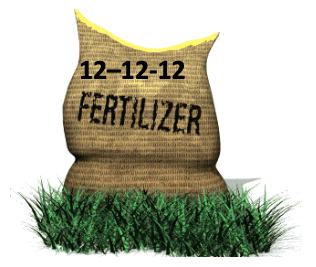As Purdue University’s Extension Forage Specialist, there is one forage production practice recommendation that draws my ire and has become a major pet peeve; so much that every time the recommendation is offered I think I lose another hair follicle on my head and legs. Not many hair follicles are left.

Carefully consider whether a pre-blended sole fertilizer source will meet the forage needs based on a soil test. (Photo Credit: Creative Commons)
It has been said that one cannot attend an agronomic meeting without the importance of soil testing, liming and fertilization being mentioned and discussed. There is a bit of truth in that statement. It is critical to know what nutrients are needed to meet a specific crop’s realistic production goal, to keep input costs in check, and to be good stewards of the environment.
My academic pet peeve is the recommendation of “X” hundred pounds of 12-12-12 or 19-19-19 (N-P2O5-K2O) as the sole source fertilizer for forages. Why does this disappointment me? Let me give a real happening between a forage producer and me that describes the frustration I have when this recommendation is given, especially when it comes from a fertilizer retailer.
Farmer “Joe” called me and said that he had a soil test in hand and was surprised that the recommendation provided by the fertilizer input provider roughly scratched on the soil test report was 300 pounds of 12-12-12. Farmer “Joe” was well trained and stated, “I went through all the effort of getting the soil sampled and tested and I end up with a recommendation like that.” I asked that the soil test information be sent to me. Sure enough, the “300 pounds 12-12-12” numbers and letters were easily found with no other comments or fertilizer sources cited on the report.
“Joe” was raising an alfalfa-orchardgrass mixture for hay. The alfalfa component of the mixture was half of the dry matter. He didn’t need the first 12 of 12-12-12 as the alfalfa, a legume, was supplying adequate nitrogen to the orchardgrass component. “Joe” didn’t need the third 12 either as the soil test was very high in potassium (K). A low phosphorus (P) soil test level, coupled with a 6-ton yield goal of hay per acre, indicated that 80 pounds of P2O5 should be applied. How much P2O5 per acre was recommended by the vendor?; 300 pounds per acre x 0.12 = 36 pounds P2O5, far short of the 80 pounds per acre that should be applied. Dollars recommended to be invested in N and K2O should have been allocated to P2O5.



